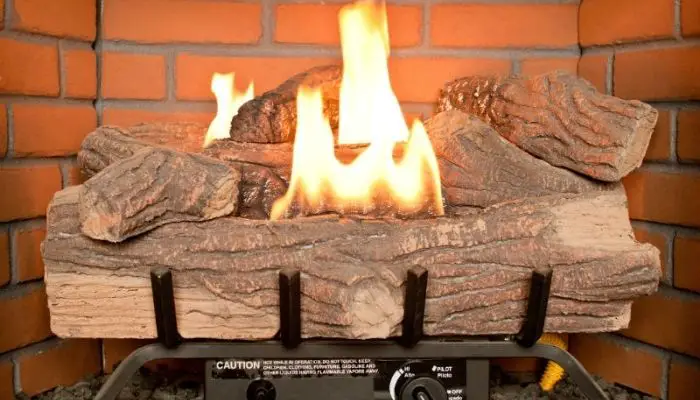Reading this topic might have you worried about using your wood-burning fireplace. However, do not jump to conclusions just yet. Let us take a keen look at the issue first and make a conclusion.
It is common that you can settle around your fireplace with your family and have a hot cup of coffee during the cold months. However, what kind of effects are you likely to experience if it is a wood-burning fireplace?
There is not much scientific evidence, but wood-burning fireplaces with poor ventilation can have serious health problems for you and your family. This is especially in a family that might have a history of lung disease and related allergies.
Some of the common health problems you may notice include the trigger of asthma and generally having difficulty breathing. Also, when the small particles from the burning wood get into your eyes, you will experience a sensation of burning eyes. Other allergy symptoms include coughing, runny nose, and at times bronchitis.
Wood-Burning and Allergies: The Connection
Right now, there is no concrete research showing that burning wood would lead to allergies. However, some elements can lead to making the existing allergies worse. An example is when you inhale the small wood particles due to burning the wood. This can get into your lungs and make it a problem for your respiratory system.
Still, wood smoke may contain other toxic substances depending on where you source it. Such substances can be benzene, methane, formaldehyde, and acrolein. Lead allergists all claim such substances can affect your lungs.
You may also experience mold too. YES, some people do not check the condition of the wood. They simply start burning wood without checking if the wood has mold. So, burning mold is quite discouraged because it can easily trigger your allergies when you inhale the smoke from such burning wood.
How to Make a Wood-Fireplace Safe
For those who own wood-burning fireplaces, do not worry. You should not stop using them. All you have to consider the U.S Environmental Protection Agency (EPA) recommendations for safer fires. Here are some of them to consider.
- You should only burn wood that has been split, covered, and also stored for at least 6 months
- Make sure that the fireplace and chimney are both inspected and cleaned each year. This should always be done by a certified professional. Here, the professional checks for gaps, cracks, and unwanted drafts. Also, the professional would help in removing any dangerous buildup.
- Even if you want to use a fireplace screen, you should consider also a tight-fitting door. This is to help in keeping the wood particles to a minimum.
- The room with the fireplace should be well-ventilated. This is to ensure that you get the best air circulation in the room and keep the smoke effects to a minimum.
- You should not burn plastic, pressure-treated, or garbage wood.
- You can use small pieces of dry wood or newspaper to help start fires with ease.
As you can see, these are the normal safety wood-burning fireplace recommendations you will be told when setting it up. Follow them and you should not have much of a problem running the wood fireplace and your safety too.
FAQs
Why Does My Fireplace Give Me A Headache?
The headaches you get after being around a wood-burning fireplace is because of the pollutants present in the wood smoke. Such pollutants can also lead to respiratory system irritation and acute bronchitis.
Is Wood Smoke Worse Than Cigarette Smoke?
Wood smoke and cigarette smoke are relatively similar, however, EPA researchers claim that wood smoke tends to be 12 times more likely to lead to cancer than cigarette smoke. However, wood smoke gets dispersed faster thus its effects on you are diminished.
What Are Symptoms Of Smoke Inhalation?
The most common symptoms of smoke inhalation include coughing, stinging eyes, irritated sinuses, chest pain, wheezing, shortness of breath, a scratchy throat, and more.
Can A Wood Burning Fireplace Cause Carbon Monoxide Poisoning?
Yes. A wood-burning fireplace can cause carbon monoxide poisoning. It is why you must have it vented properly to minimize the chances of carbon monoxide poisoning.
Conclusion: Can You Be Allergic To Smoke From A Fire
Yes, you can be allergic to smoke from a fire. This is because such smoke can lead to inflamed airways. The worst is when you have asthma or a history of lung disease.
Wood-burning fireplaces are not bad. All you need to do is follow the recommended methods for using them safely. If you can maintain the wood-burning fireplace properly, then you never have to worry about the allergies being triggered more often.


